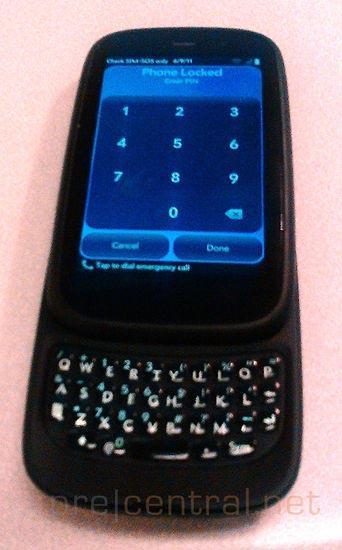
For a fledgling mobile operating system, and especially the company behind it, getting carriers on board to launch your new creation is a big step. Especially if you’re willing to put all your chips on one carrier, and hope for the best. Back when Palm was ready to release their new webOS onto the world, they chose Sprint to get the ball rolling, and release the new and unique mobile platform to the masses. Since then, we’ve seen the release of the Palm Pixi, the Pre Plus and Pixi Plus, and the Pre 2. Even more recently we’ve got the HP Veer (since Palm is no more), and now the TouchPad is on its way to store shelves. The Pre 3 is still missing, but that may be remedied here soon. And with rumors beginning to swirl as to when the Pre 3 may hit stores, it’s beginning to look like Sprint may not be a carrier that’s launching the device soon, or even later.
For both Palm and Sprint, it was about going to bat for the other company. After all, when webOS launched Sprint was still one of the underdogs. Bringing a new platform like webOS to the Now Network was like breathing a breath of fresh air into the subscriber base. And for Palm, having a carrier at all to launch their new platform on was a huge sign that someone had faith in their work and results. There’s no doubt that webOS has a big following, with plenty of folks swearing that the mobile OS is one of the best available, if not the best.
So why isn’t Sprint in the running to be launching the latest generation of webOS-based devices, or the latest version of webOS itself? As of right now, the Pre 2 is a rarity here in the States, as it’s only available on the Verizon network. And the HP Veer is available right now, courtesy of AT&T. And we know that the HP TouchPad, the first webOS-based tablet, will be launching with a 3G-based version later in the summer, also courtesy of AT&T. So, there’s no reason to doubt that the Pre 3 will more than likely find its way to AT&T’s network as well. Rumors are starting to suggest the same thing, too.
Sprint’s been phasing out its webOS-based devices, but that’s not surprising at all. The Palm Pre isn’t available anymore, but the Palm Pixi is. And there’s no reason to think that, with the Pre 3 right around the corner, that the Pre 2 will ever see the light of day on the Now Network. It’s possible that the Veer finds its way to other networks, but Sprint’s current strategy seems to be focused on Android, and only Android.
I’ve actually heard many people say that if webOS doesn’t find its way to Sprint, that they are going to drop webOS. Bold words, but it makes sense that folks would be willing to drop their favored mobile OS of choice, in hopes of keeping their current plan and network. What’s more interesting, of course, is that these same people are willing to keep their OS since its launch, all in hopes that a new device is coming. That’s dedication, without a doubt. But is that dedication going to work out?
Sprint launched webOS in the United States, but is the carrier willing to continue bringing the mobile OS to the masses? Or has the wireless carrier’s priorities shifted in some way or another, that webOS is no longer on the radar? Or, perhaps on the other side of the coin, is it HP that is making these decisions? Obviously there is a lot going on behind the curtains that we can’t see, but is it worth hoping that we’ll eventually see webOS on a wide variety of carriers, and not a limited number?
If you’re currently a Sprint subscriber, and you’ve been using webOS from the get-go, have you been waiting (patiently) to get your hands on a new device, with updated software? Are you someone who’s thinking about ditching webOS in favor of something else, because there’s nothing new on the horizon? Let me know what you think in the comments below.